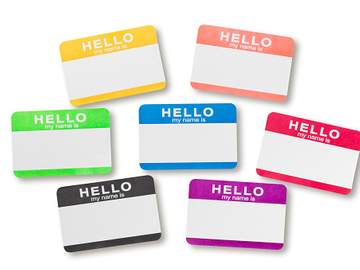What to KnowWhen using the nonbinary they, use the verb that typically goes with they: they are, they were, they have, etc. This may feel strange at first, as we're all used to "he is," "she has," and the like. Note, though, that we already do this with the pronoun you: whether we're talking to one person or five people, we always say "you are," "you have," etc. With practice, "they are" for the nonbinary person in your life will come just as naturally.
When someone tells you that their pronouns are they and them, it means that instead of referring to the person as he/him or she/her, you’re being asked to refer to the person as they/them.
Simple enough, right?
Well, yes, except that if you’re unfamiliar with the use, you might wonder what kind of a verb goes with that pronoun: is it “they are my friend” or “they is my friend”?
The simple answer is that the most natural-sounding verb is the one to use. They always goes with a plural verb, even when they is referring to a single person: “They are my friend.”

Likewise with other verbs: "They play baseball."
Singular 'They' (Are)
This is natural to native English speakers with older uses of singular they:
If someone calls, tell them I’ll be back soon.
The contest winner will be informed that they have won before the public announcement.
In these cases, the identity of the person being referred to with they or them is unknown or unspecified. But we also use a plural verb when the person’s identity is intentionally not revealed:
The identity of the contest’s winner is being kept secret for now, but we can tell you that they are elated.
And so it is with nonbinary they:
Jay won the contest, and they are elated!
Decline of Thou, Thee, and Ye
It may take some getting used to, but English speakers have been through this territory before. The word you was originally solely a plural pronoun. Back when people were speaking Old English, it was used as the object of a verb, as in “I remember you (both),” while ye was the subject of the verb, as in “Ye (both) were in my class.” Their singular counterparts were thou and thee: “I gave thee a high five”; “Thou gave me a high five.”
In the mid-13th century, these plural forms began to be used for one person, usually a superior, as a signifier of deference or respect:
Ye sat in front of me in homeroom.
I sat behind you in homeroom.
We don’t know why you and ye began to take over the territory that had belonged to thee and thou, their longtime singular counterparts, but it’s likely that the French practice of using plural pronouns in formal contexts had something to do with it, as likely did the English use of the royal “we.” Whatever the reason, the use of you and ye to refer to a single person spread. After 300 or so years, in the mid-16th century, ye started to fade from use, and you was applied in both the subject and object positions (that is, in both the nominative and accusative cases). Queen Elizabeth I was a notable proponent; writing in the 16th century, she used only you in her correspondence.
By the beginning of the 17th century, the typical English speaker would use thou and thee only for a close intimate, or to show deliberate disrespect.
English speakers noted this loss of thee and thou, and initially they modified which verb they used with you according to number: they would say “you is my friend” to one person, and “you are my friends” to multiple people. But in the 18th century this practice lost favor, and was in effect abandoned. We’ve been saying “you are my friend” to individuals and multiple people ever since.
English speakers rarely think about how odd it is that we say “I am” and “we are,” but “you are” no matter how many people that you is referring to. It’s likely that “they are” for a singular nonbinary person will be similarly unremarkable in the future.




